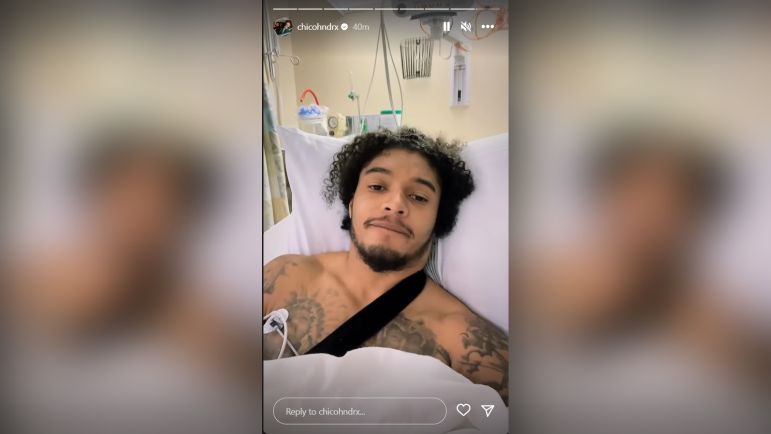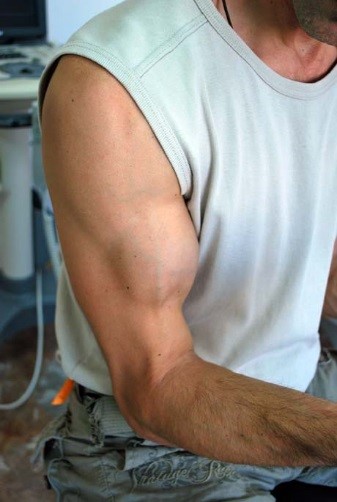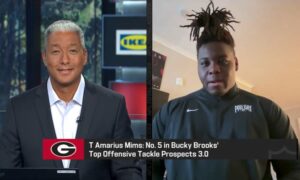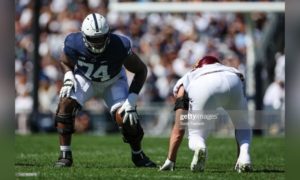Just two days after the Steelers pulled off a dramatic win over the Raiders on the night that Hall of Fame running back Franco Harris’s jersey was retired, linebacker Marcus Allen posted photos of himself on his Instagram stories with his left arm in a sling from a hospital gurney, most likely in a pre-op bay. The following day in his Tuesday press conference, head coach Mike Tomlin confirmed that the special teams regular had undergone surgery for a biceps injury.
It’s almost certain that Allen will finish out the 2022 season on IR. When the new league year begins, the fifth-year player, who has posted 12 special teams tackles this year, will become a free agent. If healthy, he would be likely to return to the Steelers at least for training camp, if not the final 53-man roster, in 2023. The question is whether his recovery timeline will limit his chances.
BICEPS ANATOMY
The shoulder is a ball-and-socket joint, with the head of the humerus (the upper bone in the arm) sitting in a rounded space in the scapula (shoulder blade). Several muscles and tendons keep those bones in the correct orientation both at rest and when moving. These tissues form the rotator cuff.
The biceps muscle runs from the shoulder to the forearm just below the elbow. The upper end has two heads, each with a tendon. The long head attaches to the socket of the shoulder joint, and the short head attaches to the coracoid process (a bony prominence of the scapula). The distal biceps tendon attaches near the elbow to the radius, one of the forearm bones.
The biceps muscle helps to flex, or bend, the arm, as well as rotate it (supination, which is moving the arm from the palm up to the palm down position).
BICEPS INJURIES
Biceps tendon tears can be partial or complete (where the tendon is totally detached).
Proximal tears (closer to the shoulder) are much more common and, usually, it is the long head of the biceps tendon that tears because it is more vulnerable as it passes through the shoulder joint. Fortunately, the short head of the biceps tendon rarely tears. And if one of the heads of the proximal biceps tendon remains intact, the biceps muscle can function to some degree and often with only a minor decrease in strength.
Distal biceps tears are far less common and are usually complete tears.
SYMPTOMS
With both proximal and distal tendon tears, a “pop” can sometimes be heard. This would typically indicate a complete tear. Sudden, sharp pain is the next thing a player might notice. Bruising on the front of the arm, cramping of the biceps muscle with use, and weakness in the shoulder and elbow are also common, as well as difficulty turning the arm from palm up to down.
Visually, a deformity in the muscle can be seen with a complete tear. If the proximal tendon is torn, the muscle mass is displaced further down the arm with a dent just below the shoulder where the muscle is no longer in position. This is known as the “Popeye Muscle”:
If the distal tendon is torn completely, the muscle retracts up the arm, forming a bulge closer to the shoulder:
TREATMENT
Initial treatment, like so many other orthopedic injuries, includes ice, NSAIDs, rest, and physical therapy. A tear of the long head of the biceps tendon often does not require surgery. If pain or weakness persists, then a repair is recommended. This can often be done arthroscopically (small incisions and a telescope). The goal is to anchor the tendon back onto the bone. A distal biceps tendon rupture does require surgical repair.
Here is a schematic video (no blood, I promise!) of a proximal tendon repair from Dr. Brian Lee, a shoulder and elbow specialist at Kerlan-Job in Los Angeles. The tendon is secured to the humerus with a button on a heavy suture and a screw. The distal biceps tendon repair is typically performed using a similar technique, as shown here in an animation from Arthrex, a medical device company that produces equipment used in many orthopedic surgeries.
MARCUS ALLEN’S FUTURE
The Steelers’ beloved DE Aaron Smith missed the last four games of the 2007 season due to a biceps injury (kind of ironic, this was after signing a 5-year contract extension in the off-season). It was suggested that this was a partial tear he was playing through which became a full tear. The following year he produced 46 tackles, 6.5 sacks, and a Super Bowl win. Heading into the preseason, Smith talked to ESPN’s James Walker and described playing through a full game with the injury, sustained in the first quarter:
“It feels like getting shot with a gun. It’s a burning, painful sensation. Every time I tried to use my arm, it felt like someone was digging a knife in my arm. It curled up to here (points to upper arm). I have a picture of it from the game. I tore it in the first quarter and played the rest of the game on it. I have a picture of me running and you can see it’s all curled up.”
It isn’t clear when in the game Marcus Allen sustained the injury but he was able to finish the game. Based on his quick trip to the OR, he most likely was found to have a complete tear.
A study published in the Journal of Shoulder and Elbow Surgery in 2021 reviewed all NFL players who were found to have a surgically treated distal biceps rupture from 2000-2016:
- 33 of the 35 players were identified (94%) were able to return to sport at an average of 351 days with a range of +/- 124 days.
- There was no difference in the number of seasons played after surgery compared to other players in the same position group
- The level of performance after surgery was unchanged. Performance scores for skill players were not different for the players undergoing repair compared to players who did not that surgery.
While this study suggested an average return to play of one year, the range of time varied from 227-475 days. It’s also fair to assume that the technology of both surgical repair and rehabilitation has improved over the past 22 years, resulting in faster recovery since the earlier part of the study period. Other more recent studies estimate the recovery to be closer to six months.
Based on the timing of Marcus Allen’s injury and surgery, he has a good chance to be ready for training camp next July. And coming off an injury, he would be a prime candidate for a one-year deal from a team that knows him well to add linebacker depth and special teams value.
“Melanie H. Friedlander, M.D., F.A.C.S. is a doctor at Association of South Bay Surgeons in Torrance, California. Dr. Friedlander enjoys all aspects of general surgery, but her primary areas of focus are breast surgery and advanced laparoscopic surgery. She recently adopted an advanced, minimally invasive technique that reduces scar size in thyroid surgery. Dr. Friedlander is a member of the Society of American Gastrointestinal Endoscopic Surgeons (SAGES) and the Society of Laparoscopic Surgeons. She developed and published many scientific studies in highly esteemed medical journals.”












